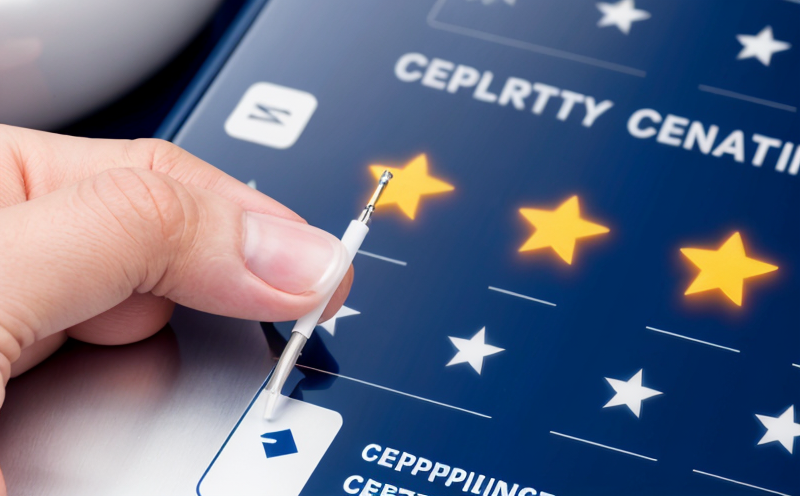ISO 10993-7 EO Residuals Compliance Testing
The ISO 10993 series of standards are internationally recognized guidelines for ensuring the safety of medical devices. Among these, ISO 10993-7: Biological Evaluation of Medical Devices—Part 7: Sterilization Process and Sterility Assurance Level (SAL) focuses specifically on sterilization processes, including Ethylene Oxide (EO) sterilization.
The standard requires the evaluation of residual EO levels to ensure they are within safe limits after sterilization. This is critical because even trace amounts of EO can pose risks if not adequately removed prior to device use. The testing procedure involves a series of steps aimed at quantifying the remaining EO in the device post-sterilization.
Our service adheres strictly to ISO 10993-7, ensuring that all tests are conducted using certified laboratories and validated methods. We employ advanced analytical techniques such as gas chromatography with mass spectrometry (GC-MS) for precise quantification of EO residuals. This ensures accurate measurement down to the lowest permissible limit.
The testing process typically involves several stages:
- Sample Preparation: The medical device is cleaned and prepared according to standard protocols before analysis.
- Sterilization: The device undergoes EO sterilization in a controlled environment.
- Residual Measurement: Post-sterilization, samples are analyzed using GC-MS to determine the level of EO residuals.
- Data Analysis and Reporting: Results are thoroughly evaluated against regulatory thresholds. Reports include detailed analysis and compliance statements.
The service is designed for quality managers, compliance officers, R&D engineers, and procurement teams who need assurance that their medical devices meet stringent safety requirements. Our comprehensive approach ensures not only compliance but also the highest level of patient safety.
Understanding the importance of this testing process, we offer a range of value-added services including:
- Customized test protocols tailored to specific device types and sterilization processes.
- Training sessions for personnel involved in medical device development and compliance.
- Rapid turnaround times to meet tight regulatory deadlines.
The ISO 10993-7 EO Residuals Compliance Testing service is essential for maintaining the integrity of your medical devices. By adhering strictly to this standard, you can ensure that your products are safe and reliable, meeting both national and international standards.
| Test Parameter | Description | Acceptance Criteria (ppm) |
|---|---|---|
| Total EO Residuals | Sum of EO residuals on the device surface | <10 ppm |
| EO Residuals in Specific Areas | Residuals in critical areas identified during the evaluation process | <5 ppm |
Why It Matters
The safety and efficacy of medical devices are paramount, especially in a sector where patient trust is critical. EO sterilization has been widely used for decades due to its effectiveness against a broad spectrum of microorganisms. However, the use of EO also introduces the risk of residual EO on the device surface, which can pose health risks if not adequately removed.
According to ISO 10993-7:2022, ensuring that residual EO levels are below a certain threshold is crucial. This standard specifies the maximum permissible limits for EO residuals, which vary depending on the criticality of the device and its intended use. For instance, devices in direct contact with blood or tissues often have more stringent limits due to their potential exposure to sensitive biological systems.
The significance of this testing cannot be overstated, as even trace amounts of EO can lead to adverse health effects such as skin irritation, respiratory issues, and other health concerns. By adhering strictly to ISO 10993-7, manufacturers can ensure that their devices are safe for use, thereby protecting both the manufacturer's reputation and public health.
Our service goes beyond mere compliance; it ensures a level of excellence that meets or exceeds regulatory requirements. This is achieved through our state-of-the-art facilities, experienced personnel, and adherence to international standards. By partnering with us, you can rest assured that your medical devices are not only compliant but also safe for use.
Industry Applications
The ISO 10993-7 EO Residuals Compliance Testing service finds application in various sectors of the healthcare industry. These include:
- Hospitals and Clinics: Ensuring that devices used in surgical procedures meet safety standards.
- Dental Practices: Providing assurance for dental equipment sterilization processes.
- Clinical Research Institutions: Supporting the development of new medical devices.
- Pharmaceutical Manufacturers: Ensuring compatibility with EO-sterilized products.
In these applications, ensuring that residual EO levels are within safe limits is critical. The service supports a wide range of device types including surgical instruments, implants, and diagnostic tools. By adhering to this standard, we help our clients meet the rigorous requirements set by regulatory bodies such as the FDA and EU Medical Device Regulation (MDR).
The service is particularly relevant for companies that are developing new products or those looking to expand into international markets. By ensuring compliance with ISO 10993-7, we help them navigate the complex regulatory landscape and gain market access.
Use Cases and Application Examples
The following are some real-world applications of our ISO 10993-7 EO Residuals Compliance Testing service:
- Surgical Instruments: Ensuring that instruments like scalpels, forceps, and scissors meet safety standards.
- Dental Implants: Providing assurance for devices used in root canal treatments or tooth extraction.
- Catheters: Ensuring compatibility with EO-sterilized catheter materials to prevent infections.
- Dialysis Machines: Supporting the sterilization process of critical components in dialysis machines.
| Use Case | Description | Acceptance Criteria (ppm) |
|---|---|---|
| Surgical Instruments | Ensuring instruments are safe for direct patient use after sterilization. | <10 ppm |
| Dental Implants | Providing assurance that implants are free from EO residues to prevent adverse reactions. | <5 ppm |
In each of these cases, the service plays a crucial role in ensuring that devices meet rigorous safety standards. By adhering strictly to ISO 10993-7, we help our clients provide safe and reliable products.





